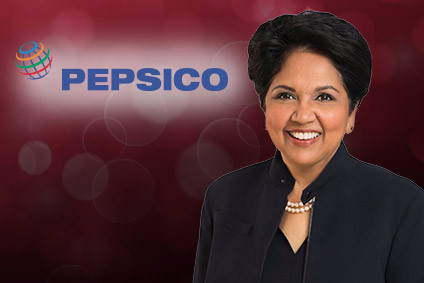PepsiCo’s net revenue grew at an annualized rate of 5.5%, reaching $63.5 billion in 2017 while $79.4 billion was returned to shareholders in the form of dividends and share repurchases.
Let's see how she did it:
1.
In anticipation of a continued decline in demand for soda and junk food, especially in the developed world, Nooyi drove a shift in PepsiCo’s snacks and drinks business towards healthier items. As of 2017, “better-for-you” and “good-for-you” products, or healthier options, comprised 50% of the company’s sales, compared with 38% in 2006.
[1.1]
Drove acquisitions of health food brands such as Tropicana in 1998, Quaker Oats in 2000, Kevita - a probiotic drink maker - in 2016, Bare Snacks - a maker of fruit and vegetable snacks - announced in 2018,
[1.2]
Pledging to reduce obesity rates, she reduced the sizes of chips packets and soda bottles, culled salt, fat and sugar content and introduced diet brands as aspirational alternatives.
[1.3]
Launched Zero-sugar versions of the company’s staple soft-drink brands
[1.4]
Launched chips without artificial preservatives
[1.5]
Launched a number of healthier food options ranging from hummus to baked chips to cold-press juices and probiotic drinks.
2.
Successfully thwarted off an attempt in 2014 by Nelson Peltz, an activist investor, to split the company’s sluggish beverages and fast-growing snacks business and have them managed differently.
[2.1]
She argued that retaining both Pepsi and Frito Lay under one roof was vital to maintaining a competitive advantage over other food retailers, especially for cross-promotion opportunities.
[2.2]
The public argument over the split ended in 2016, when Peltz sold his $2 billion stake in the company. However, Nooyi’s departure could now see a renewed push by investors to divide the company.
3.
Made international expansion a priority.
[3.1]
Made company expand its distribution network and increase sales by targeting the middle classes in developing regions of the world like Asia and Africa.
[3.2]
Nearly 21% of PepsiCo’s net revenues came from Asia, North Africa, the Middle East and Latin America in 2017.
[3.3]
The company has established a strong foothold in India. In 2013, PepsiCo announced a plan to invest $5.5 billion in India by 2020, directly taking on Coke for the top spot in the country’s beverage market by doubling its manufacturing capacity.
4.
Drinks have gradually become less important to Pepsi as focus has shifted to healthy snacks, which command a higher premium than traditional snacks.
[4.1]
The Frito Lay unit has now grown to comprise of 46% of the company’s operating profit and around a quarter of its sales.
[4.2]
With brands like Doritos, Lays and Smartfood, the unit has become a global leader in the snacks category and command a 66% share of the domestic market. In fact, Frito Lay North America has fast become PepsiCo’s most valuable product segment. Around 90% of its sales come from brands that have the first or second position in their respective categories.
Let's see how she did it:
1.
In anticipation of a continued decline in demand for soda and junk food, especially in the developed world, Nooyi drove a shift in PepsiCo’s snacks and drinks business towards healthier items. As of 2017, “better-for-you” and “good-for-you” products, or healthier options, comprised 50% of the company’s sales, compared with 38% in 2006.
[1.1]
Drove acquisitions of health food brands such as Tropicana in 1998, Quaker Oats in 2000, Kevita - a probiotic drink maker - in 2016, Bare Snacks - a maker of fruit and vegetable snacks - announced in 2018,
[1.2]
Pledging to reduce obesity rates, she reduced the sizes of chips packets and soda bottles, culled salt, fat and sugar content and introduced diet brands as aspirational alternatives.
[1.3]
Launched Zero-sugar versions of the company’s staple soft-drink brands
[1.4]
Launched chips without artificial preservatives
[1.5]
Launched a number of healthier food options ranging from hummus to baked chips to cold-press juices and probiotic drinks.
2.
Successfully thwarted off an attempt in 2014 by Nelson Peltz, an activist investor, to split the company’s sluggish beverages and fast-growing snacks business and have them managed differently.
[2.1]
She argued that retaining both Pepsi and Frito Lay under one roof was vital to maintaining a competitive advantage over other food retailers, especially for cross-promotion opportunities.
[2.2]
The public argument over the split ended in 2016, when Peltz sold his $2 billion stake in the company. However, Nooyi’s departure could now see a renewed push by investors to divide the company.
3.
Made international expansion a priority.
[3.1]
Made company expand its distribution network and increase sales by targeting the middle classes in developing regions of the world like Asia and Africa.
[3.2]
Nearly 21% of PepsiCo’s net revenues came from Asia, North Africa, the Middle East and Latin America in 2017.
[3.3]
The company has established a strong foothold in India. In 2013, PepsiCo announced a plan to invest $5.5 billion in India by 2020, directly taking on Coke for the top spot in the country’s beverage market by doubling its manufacturing capacity.
4.
Drinks have gradually become less important to Pepsi as focus has shifted to healthy snacks, which command a higher premium than traditional snacks.
[4.1]
The Frito Lay unit has now grown to comprise of 46% of the company’s operating profit and around a quarter of its sales.
[4.2]
With brands like Doritos, Lays and Smartfood, the unit has become a global leader in the snacks category and command a 66% share of the domestic market. In fact, Frito Lay North America has fast become PepsiCo’s most valuable product segment. Around 90% of its sales come from brands that have the first or second position in their respective categories.
Nooyi
Sources:
Businessinsider.in/Heres-how-Indra-Nooyi-changed-PepsiCo-in-her-12-years-as-CEO/articleshow/65307441.cms

No comments:
Post a Comment